English
Greetings dear friends and followers of this wonderful community of Amazing Nature nature lovers. Here I am again sharing with all of you another of my contents. Giving thanks to GOD for allowing me to be part of this important HIVE platform where every day I am acquiring more knowledge with topics of great interest that are contributed by all of you. Today's post is about the
Pitahaya plant
Spanish
Saludos apreciados amigos y seguidores de esta maravillosa comunidad de Amazing Nature amantes de la naturaleza. Por acá estoy nuevamente compartiendo con todos ustedes otro de mis contenidos. Dando gracias a DIOS por permitirme formar parte de esta importante plataforma HIVE donde cada día voy adquiriendo mayores conocimientos con temas de gran interés que son aportados por todos ustedes. Mi post del día de hoy trata sobre la planta de Pitahaya
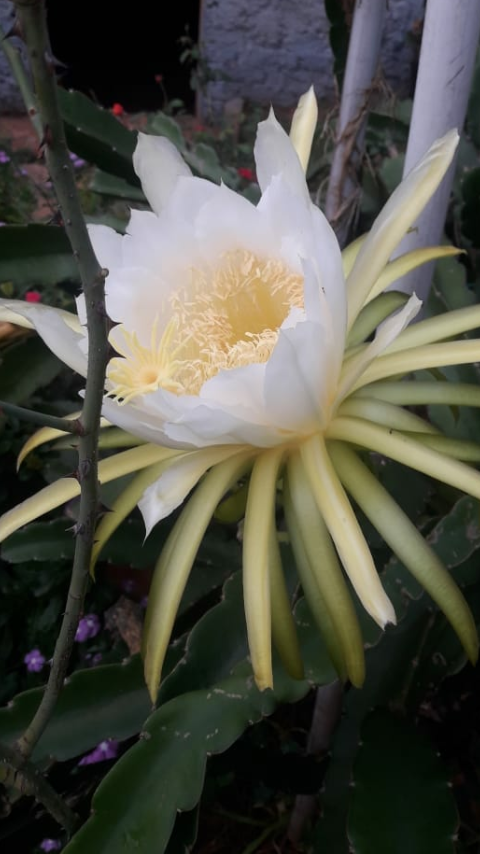
Author @diana20
This plant whose scientific name is Hyloceruos Undatus belongs to the Cactaceae family and includes more than 10 semi-epiepiphyte species. It is native to Central America, Mexico and the Caribbean. Due to its easy cultivation it is known worldwide with common names such as Queen of the Night, Calyx Flower, Pitahaya, Climbing Cactus and Forest Cactus. They are Cactus of long and branched stems of dark green color and triangular section, as we can appreciate in the following image. They can reach up to 5 meters long.
Está planta cuyo nombre científico es Hyloceruos Undatus pertenece a la familia de las Cactaceae incluye más de 10 especies semiepiepifitos. Es originaria de Centroamérica, México y el Caribe. Por su fácil cultivo es conocida a nivel mundial con nombres comunes como Reina de la noche, Flor de Cáliz, Pitahaya, Cactus Trepador y Cactus del bosque. Son Cactus de tallos largos y ramificados de color verde oscuro y sección triangular, como lo podemos apreciar en la siguiente imagen. Estos pueden llegar a medir 5 metros de largo
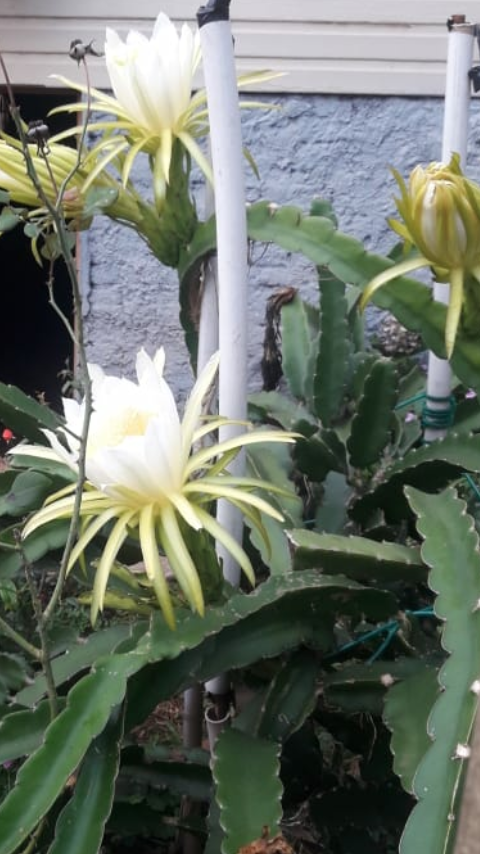
Author @diana20
In the areoles they have 1 to 3 small spikes. They emit beautiful white flowers that can be up to 30cm long. This nocturnal flowering usually occurs from mid-summer to mid-autumn. Its fruits called dragon fruits are edible and pleasant tasting. They are used as an indoor plant but in tropical climates can thrive very well outdoors climbing walls and walls. It is mainly used as an ornamental plant but in its place of origin it is cultivated for its fruits.
En las areolas tienen de 1 a 3 espigas pequeñas. Emiten hermosas flores blancas que pueden llegar a medir hasta 30cm de largo. Esta floración nocturna suele darse desde mediados de verano hasta mediados de otoño. Sus frutos llamados frutos del dragon son comestibles y de agradable sabor. Son usadas como planta de interior pero en climas tropicales puede prosperar muy bien en el exterior trepando muros y paredes. Se usa sobre todo como plantas ornamentales pero en su lugar de origen se cultivan por sus frutos
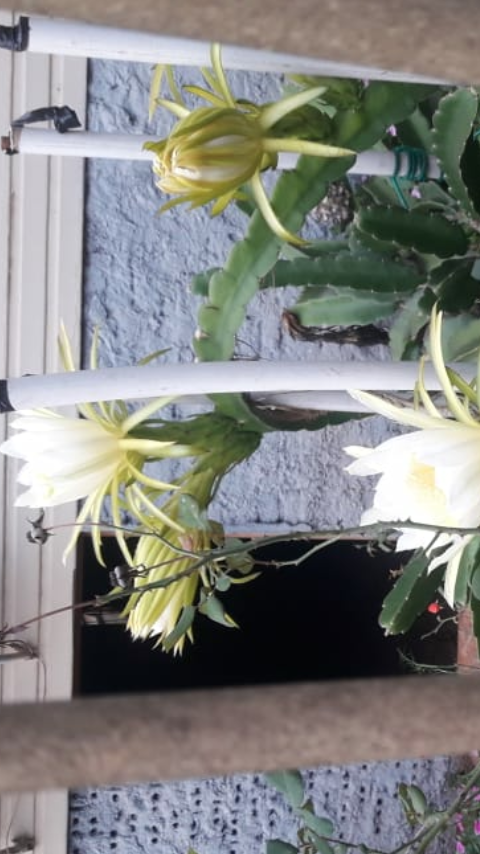
Author @diana20
The climbing cactus needs a semi-shade exposure and although it may well thrive in full sun its stems will take on a brownish color that will detract from the plant.
thrive in full sun its stems will take on a brownish color that will detract from the plant. The ideal soil for its development is leaf mulch with siliceous sand, watering should be abundant in spring and summer until the end of flowering. In winter, watering should be reduced but the soil should not dry out completely.
These plants are resistant to pests and diseases, they do not need fertilizers or pruning.
As they have the particularity of producing aerial roots, they can be easily reproduced by cuttings.
El cactus trepador necesita una exposición de semi-sombra y aunque bien puede
prósperar a pleno sol sus tallos tomarán un color pardo que deslucirá la planta. El suelo ideal para su desarrollo es el de mantillo de hojas con arena silícea, los riegos deben ser abundantes en primavera y verano hasta que termine la floración. En invierno disminuir los riegos pero evitando siempre a que el suelo seque por completo
Estas plantas son resistentes a plagas y enfermedades, no necesitan abonos ni poda.
Como tienen la particularidad de producir raíces aéreas pueden reproducirse fácilmente a través de esquejes.
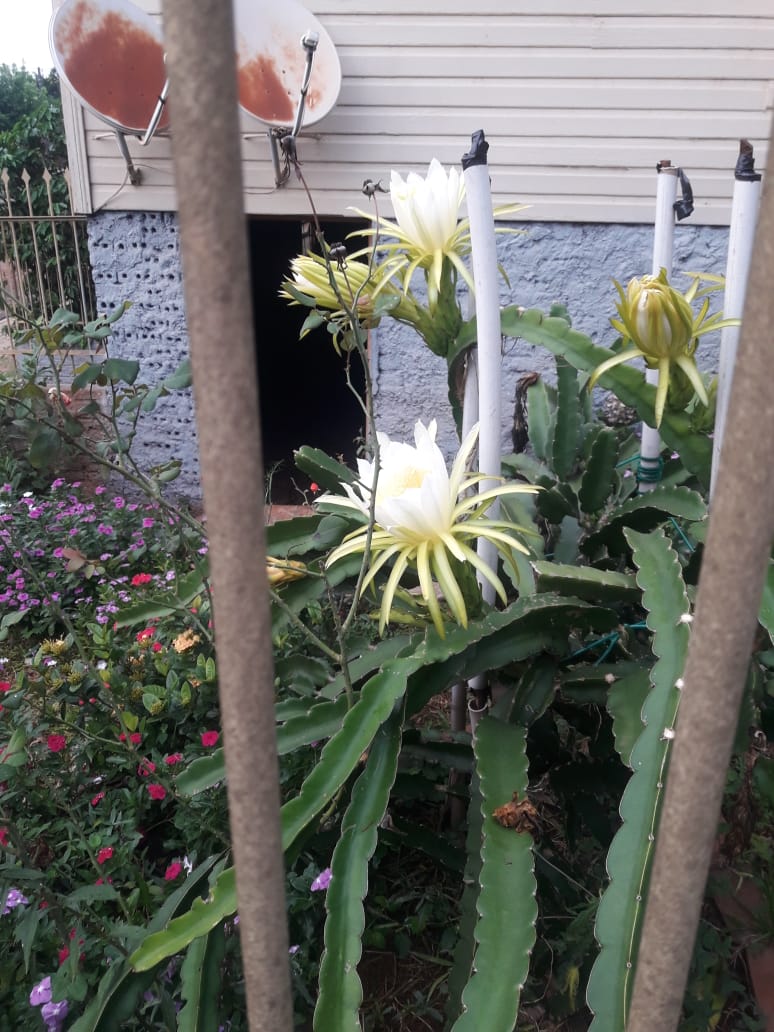
Author @diana20
This was all my publication which I share with much affection for all of you, I hope you like it, thank you for reading, commenting and supporting me!
Está fue toda mi publicación la cuál comparto con mucho cariño para todos ustedes espero sea de su agrado. ¡Gracias por leerme, comentarme y apoyarme!
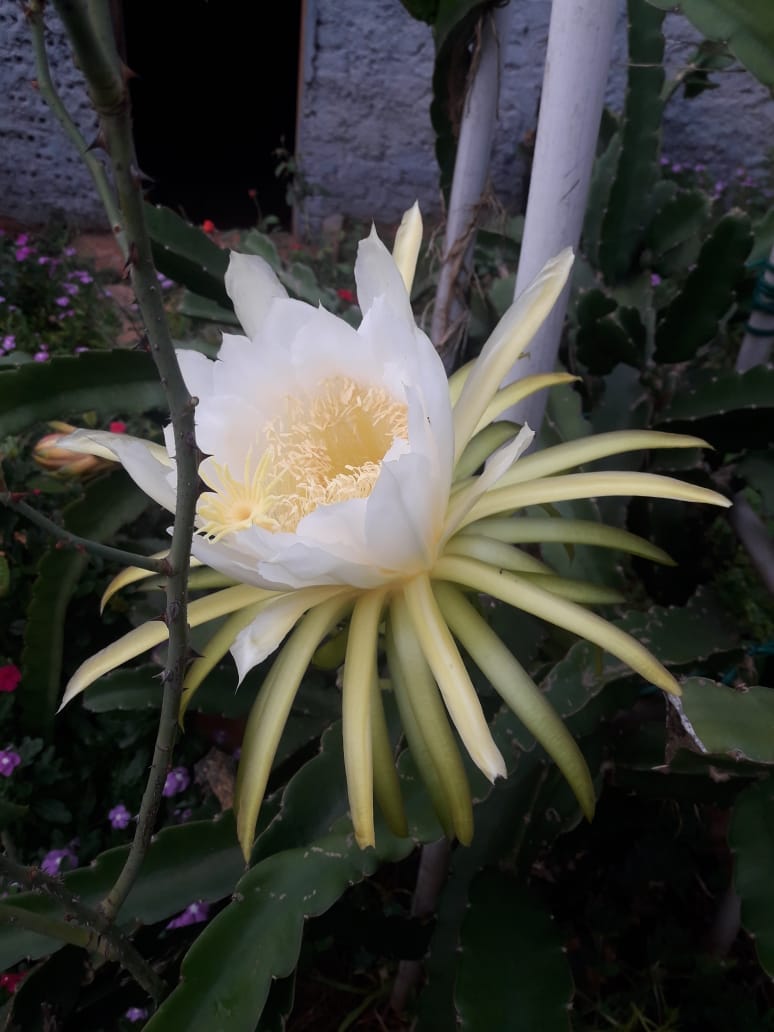
Author @diana20
Until next time have a nice day full of great successes and many blessings.
Hasta la próxima que tengan un bonito día cargado de grandes éxitos y muchas bendiciones
!discovery 10
This post was shared and voted inside the discord by the curators team of discovery-it
Join our community! hive-193212
Discovery-it is also a Witness, vote for us here
Delegate to us for passive income. Check our 80% fee-back Program